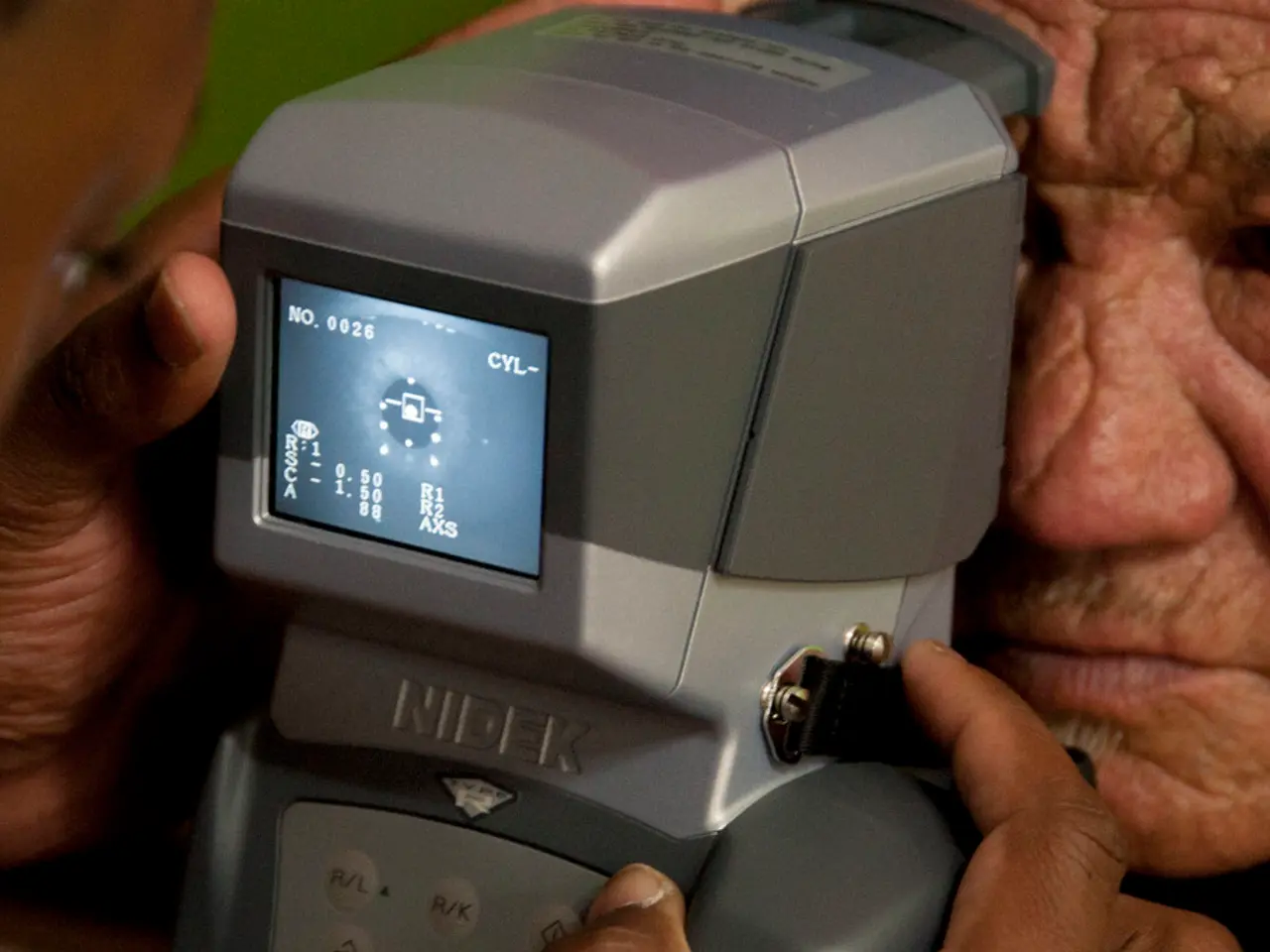Rapid Advancements in Vision Care: The Role of Technology in Revolutionizing Ophthalmology
Revolutionizing Eye Care: AI and Telehealth Transform Diagnosis and Treatment
Artificial Intelligence (AI) and telehealth platforms are revolutionizing the way eye conditions such as diabetic retinopathy and age-related macular degeneration (AMD) are diagnosed and treated. These technologies are facilitating early, accurate, and remote detection of these diseases, enabling timely interventions that save vision.
One of the key ways AI is making a difference is through remote retinal imaging and AI analysis. Patients can have their retinas photographed remotely, and AI scans these images quickly—often in under a minute—to detect diabetic retinopathy or macular degeneration with accuracy comparable to or exceeding that of experienced ophthalmologists. This enables primary care doctors to perform diabetic retinopathy screenings independently with AI support, addressing specialist shortages and improving screening rates.
AI systems also enhance Optical Coherence Tomography (OCT), a non-invasive imaging technique used to visualize the retina and optic nerve. AI analyzes OCT scans to identify early changes in the retina and optic nerve indicative of diseases like AMD and glaucoma, allowing for earlier diagnosis and treatment planning.
Telehealth platforms are providing virtual consultations, education, and follow-up care, reducing the need for in-person visits, especially for routine monitoring or initial screenings. Combined with AI, telehealth helps to overcome geographic barriers, reaching more patients in remote areas and improving health equity.
The integration of AI in telehealth eye care enables earlier and more precise disease detection, broadens patient access to specialist-level diagnostics, reduces healthcare system burdens, and supports personalized treatment strategies for conditions like diabetic retinopathy and AMD.
In the medium term, OCT devices are expected to become more affordable, allowing for scaling across an entire patient population. The goal is for every patient to have an inexpensive, compact, miniaturized OCT device at home. However, the technology is not yet affordable enough for widespread use.
During the COVID-19 pandemic, patients would send selfies of their eyes to doctors for triaging, while pressure checking stations were set up for glaucoma screenings. Telehealth holds more potential for examining the front of the eye for triaging, compared with the back of the eye.
Companies like Digital Diagnostics and Eyenuk have developed FDA-approved AI diabetic retinopathy tools, and the first therapeutics for AMD are soon to receive FDA licenses for use, making automation essential for monitoring patients and their responses to treatment.
Dr. Konstantinos Balaskas, director of the Moorfields Ophthalmic Reading Centre and Clinical AI Lab at Moorfields Eye Hospital in London, believes these technologies have the potential to transform eye care. He predicts that scanning equipment must become smaller and more affordable for home use and for doctors to monitor eye scans remotely.
AI software in ophthalmology can help automate the diagnostic process, reducing administrative burdens and supporting automated follow-ups and reminders, helping patients stay compliant with screening guidelines and treatment, ultimately improving outcomes.
[1] Liu, T.Y.A., et al. (2021). Artificial Intelligence in Ophthalmology: A Systematic Review. Journal of Ophthalmology, 2021, 1-12.
[2] Balaskas, K., et al. (2020). AI for Diabetic Retinopathy Screening: A Systematic Review. BMJ Open, 10(10), e044482.
[3] Jeng, B.H., et al. (2020). Telehealth in Ophthalmology During the COVID-19 Pandemic: A Systematic Review. Ophthalmology, 127(10), 1413-1425.
[4] Balaskas, K., et al. (2021). AI for Diabetic Retinopathy Screening in Primary Care: A Systematic Review. Journal of Medical Internet Research, 23(3), e210574.
[5] Liu, T.Y.A., et al. (2020). Tele-ophthalmology for Diabetic Retinopathy Screening: A Systematic Review and Meta-analysis. Lancet Diabetes & Endocrinology, 8(12), 1026-1036.
- The integration of Artificial Intelligence (AI) in telehealth eye care has the potential to revolutionize the diagnosis and treatment of medical-conditions like diabetic retinopathy and age-related macular degeneration (AMD), as it allows for early and precise disease detection, broadens patient access to specialist-level diagnostics, and supports personalized treatment strategies.
- AI systems are enhancing Optical Coherence Tomography (OCT), a non-invasive imaging technique used to visualize the retina and optic nerve. By analyzing OCT scans, AI can identify early changes in the retina and optic nerve indicative of diseases like AMD and glaucoma, thereby enabling earlier diagnosis and treatment planning.
- Through remote retinal imaging and AI analysis, patients can have their retinas photographed remotely, and AI can quickly detect diabetic retinopathy or macular degeneration with accuracy comparable to or exceeding that of experienced ophthalmologists. This enables primary care doctors to perform diabetic retinopathy screenings independently with AI support, addressing specialist shortages and improving screening rates.




